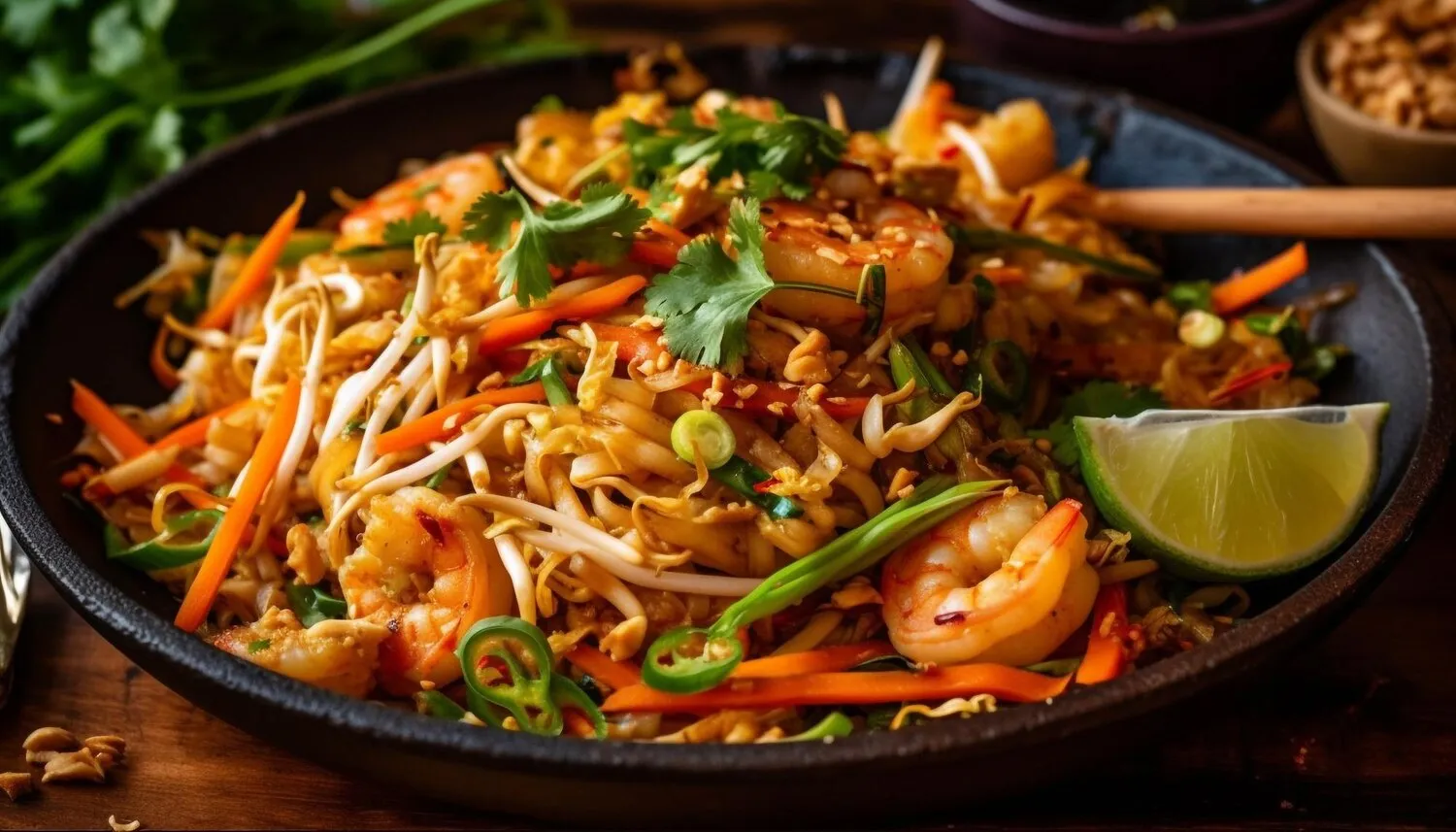
Udon
Udon is a type of thick, wheat flour noodle popular in Japanese cuisine. Often served in a broth with various toppings. Japan Go could offer different variations.
Nutrition Facts
* The % Daily Value (DV) tells you how much a nutrient in a serving of food contributes to a daily diet. 2,000 calories a day is used for general nutrition advice.
Udon noodles have a long history in Japan, with some believing they were introduced from China as early as the 7th century. However, the specific form of thick, chewy noodles we know today evolved over centuries, with regional variations developing significantly during the Edo period (1603-1868). The flour milling techniques and noodle-making processes improved over time, leading to the refined udon we enjoy now.
Udon is a staple food in Japan, deeply ingrained in the country's culinary culture. It's a comfort food enjoyed year-round, often associated with warmth, simplicity, and affordability.
Regional Variations
Different regions in Japan boast their own unique udon styles. Sanuki udon from Kagawa Prefecture is known for its firm, chewy texture, while Inaniwa udon from Akita Prefecture is thinner and smoother. These regional variations reflect local ingredients and culinary traditions.
Everyday Meal
Udon is a common and affordable meal, often enjoyed for lunch or a quick dinner. It can be found in various settings, from casual noodle shops to train station kiosks.
Festivals and Celebrations
Udon can be served during festivals or special occasions, symbolizing good luck and long life. In some regions, udon is traditionally eaten on New Year's Eve.
Udon's flavor profile is generally savory and umami-rich, derived from the dashi broth, soy sauce, and mirin. The noodles themselves have a mild, slightly wheaty flavor that complements the broth.
The foundation of udon's flavor is the dashi broth, traditionally made from kombu (kelp) and katsuobushi (dried bonito flakes). Soy sauce provides saltiness and umami, while mirin adds sweetness. Other common ingredients include green onions, tempura, aburaage (fried tofu), kamaboko (fish cake), and various vegetables, each contributing unique textures and flavors. Regional variations incorporate ingredients like curry, miso, or even beef.
Noodle Texture
The texture of the udon noodle is crucial. Freshly made udon, properly cooked, should be chewy and slightly slippery.
Broth Quality
A well-made dashi broth is essential. Using high-quality kombu and katsuobushi will significantly enhance the flavor.
Topping Combinations
Experiment with different toppings to find your preferred combination. Tempura, soft boiled eggs, and thinly sliced meats are all excellent choices.
Slurping is Encouraged
In Japan, slurping noodles is not considered rude; in fact, it's a sign that you are enjoying the meal. It also helps to cool down the noodles and enhance their flavor.
Explore additional Noodles dishes and restaurants
Explore NoodlesDiscover top dining spots and culinary experiences in Moncton.
Explore MonctonLearn more about the food culture, restaurant scene, and culinary heritage of Canada.
Explore Canada